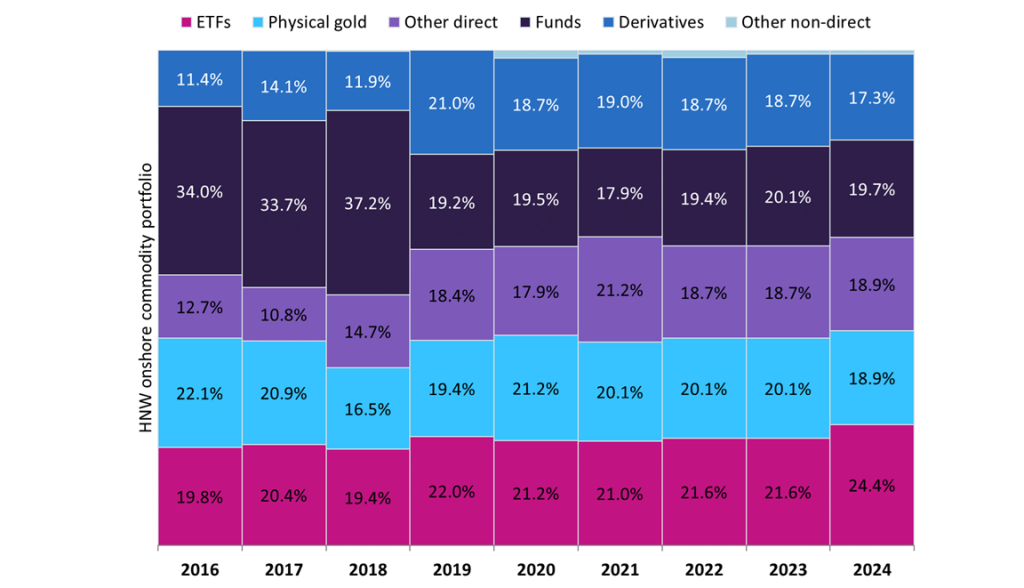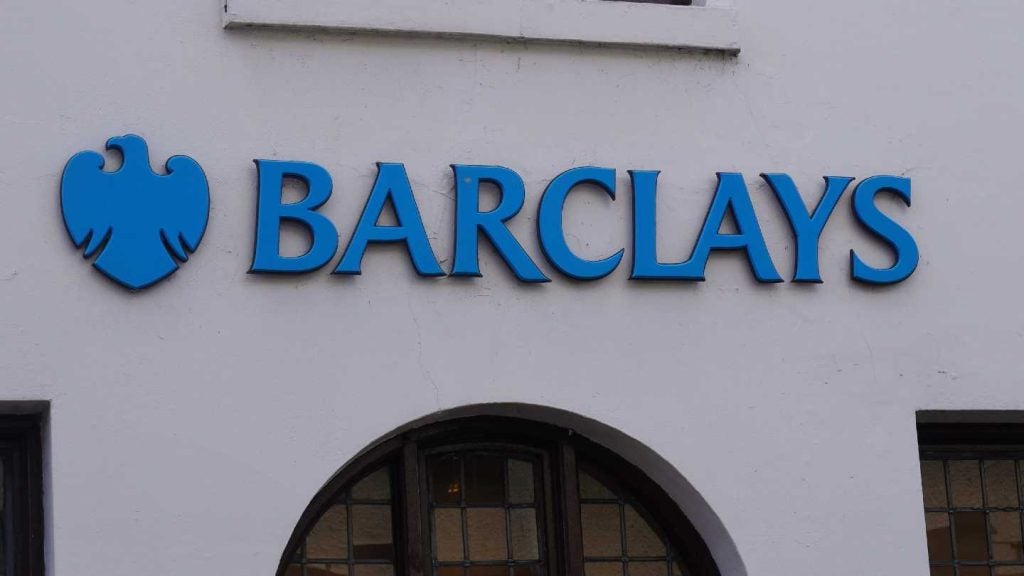Gold prices have surged to the unprecedented level of $3,000 per ounce, driven by a mixture of macroeconomic factors, geopolitical tensions, and shifting investor sentiment. While this milestone highlights gold’s status as a safe-haven asset, it also shows the importance of being able to offer gold-backed financial products, in particular exchange-traded funds (ETFs).
Despite gold’s bullish performance amid mounting global uncertainties, high-net-worth (HNW) investors’ direct exposure remains limited. According to our HNW Asset Allocation Analytics 2024, only 2.4% of HNW onshore wealth is allocated to gold directly (or 18.9% of investors’ commodity portfolios).
Instead, we have seen an increased reliance on ETFs to gain exposure to precious metals given easier access and greater liquidity. Commodity ETFs now constitute 24.4% of the average HNW commodity portfolio, up from 21.6% the year prior.
Investors who only prefer access to gold in the short term during times of heightened volatility are notably more likely to rely on ETFs than physical products. In fact, after sell-offs between 2021 and 2023 and a flat 2024, investors have become net buyers of gold ETFs in 2025. As global market uncertainties are unlikely to subside anytime soon, offering ETFs that provide exposure to gold and other precious metals is critical.
HNW Onshore Commodity Portfolio, 2024


US Tariffs are shifting - will you react or anticipate?
Don’t let policy changes catch you off guard. Stay proactive with real-time data and expert analysis.
By GlobalData









